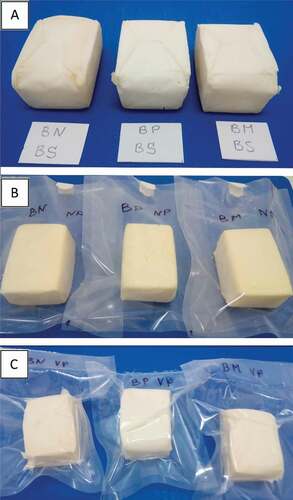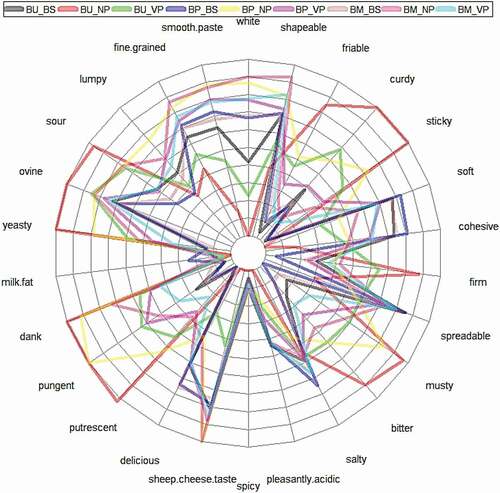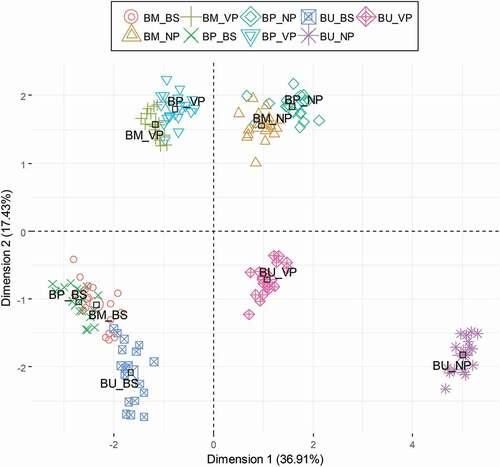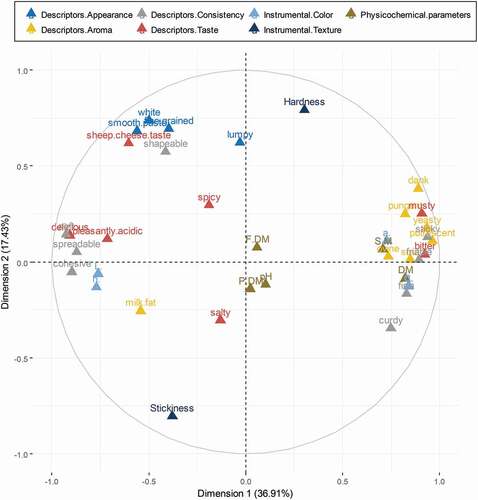Figures & data
Figure 1. (A) Bryndza cheese samples before storage; (B) bryndza cheese samples after storage in non-vacuum–packed conditions; (C) bryndza cheese samples after storage in vacuum packed conditions.
BU, bryndza cheese made from unpasteurised ewe milk; BP, bryndza cheese made from pasteurised ewe milk; BM, bryndza cheese made from unpasteurised ewe milk with addition of cow lump cheese from pasteurised milk (50%); BS, before storage; NP, after the 14th day of storage without packaging; VP, after the 14th day of vacuum packaging storage.

Table 1. Physicochemical results of bryndza cheese samples (means ± SD).
Table 2. Results of colour analysis of bryndza cheese samples during storage (means ± SD).
Table 3. Results of texture analysis of bryndza cheese samples during storage (means ± SD).
Figure 2. Sensory profile of bryndza cheese samples during storage.
BU, bryndza cheese made from unpasteurised ewe milk; BP, bryndza cheese made from pasteurised ewe milk; BM, bryndza cheese made from unpasteurised ewe milk with addition of cow lump cheese from pasteurised milk (50%); BS, before storage; NP, after the 14th day of storage without packaging; VP, after the 14th day of vacuum packaging storage.

Figure 3. Multiple factor analysis plot of bryndza cheese varieties individuals during storage.
BU, bryndza cheese made from unpasteurised ewe milk; BP, bryndza cheese made from pasteurised ewe milk; BM, bryndza cheese made from unpasteurised ewe milk with addition of cow lump cheese from pasteurised milk (50%); BS, before storage; NP, after the 14th day of storage without packaging; VP, after the 14th day of vacuum packaging storage.


